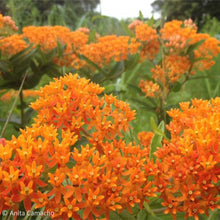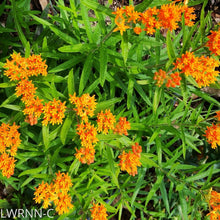This native plant is commonly known as butterfly weed because of the butterflies that are attracted to the plant by its color and its nectar. It is host plant for the queen, monarch and soldier butterflies, as well as the dogbane tiger moth, milkweed tussock moth, and the unexpected cycnia. Hummingbirds, bees and other insects are also attracted to it. It is not a preferred host plant of the monarch butterfly but caterpillars can be reared on it successfully. However, it is one of the very lowest Asclepias species in cardenolide content, making it a poor source of protection from bird predation and parasite virulence. Butterfly weed grows best in dry, sandy soil when given full sun to part shade. This plant can be expected to bloom summer through fall before going dormant in the winter. Butterfly weed grows up to 2-3 feet.
- Short-lived perennial
- Winter dormant
- HT: 12-3 Ft. WT: 0.5 – 1.5 Ft.
- Flower color: orange
- Can be grown from seed
- Exposure: Full sun-part shade
- Moisture tolerance: dry to very dry
- Soil type: sand
- Soil pH: slightly acidic to neutral
- Blooms: Summer to fall
- Zone: 8A to 10B
//ab




